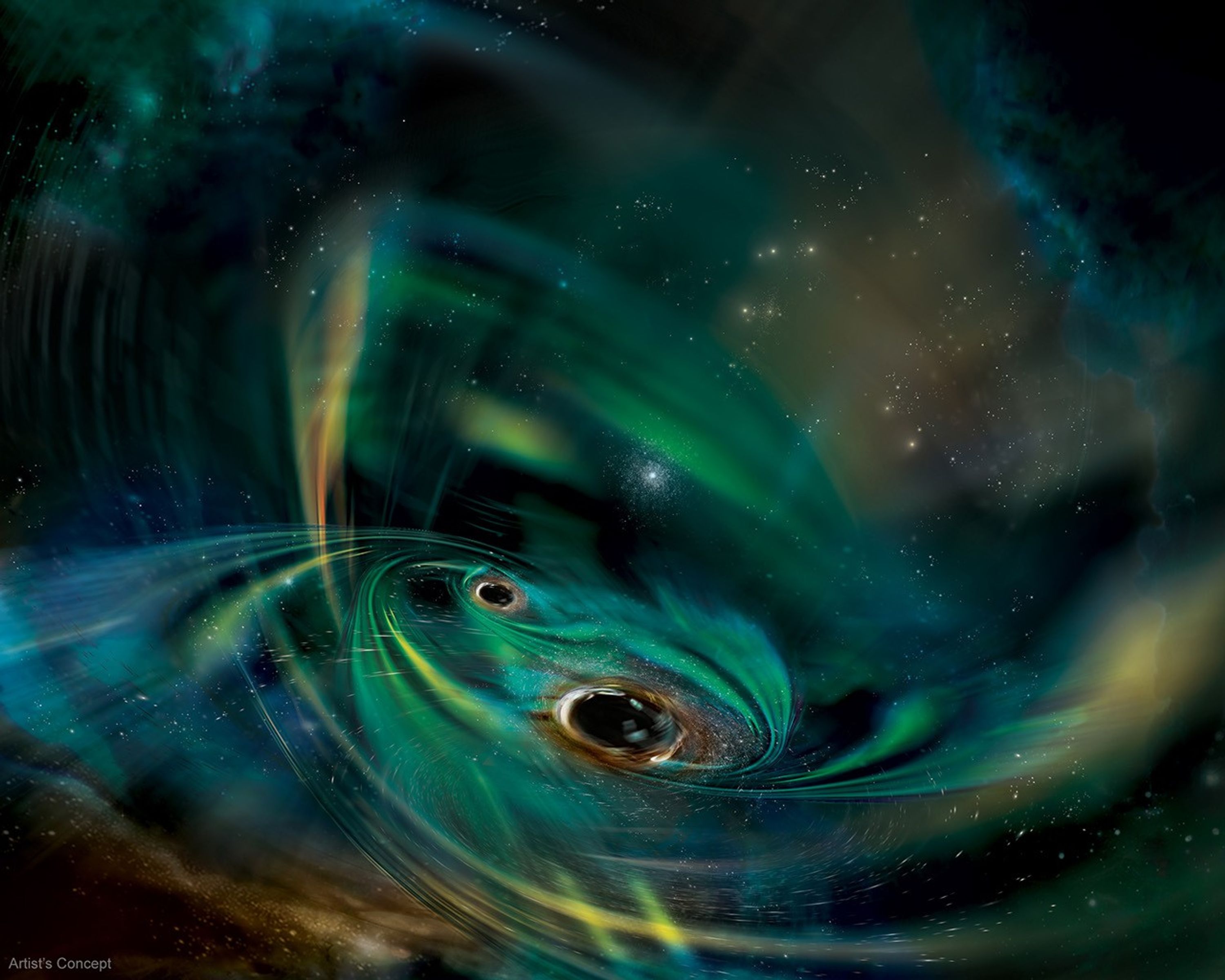4 min read

Scientists using observations from NASA's Neil Gehrels Swift Observatory have discovered, for the first time, the signal from a pair of monster black holes disrupting a cloud of gas in the center of a galaxy.
"It's a very weird event, called AT 2021hdr, that keeps recurring every few months," said Lorena Hernández-García, an astrophysicist at the Millennium Institute of Astrophysics, the Millennium Nucleus on Transversal Research and Technology to Explore Supermassive Black Holes, and University of Valparaíso in Chile. "We think that a gas cloud engulfed the black holes. As they orbit each other, the black holes interact with the cloud, perturbing and consuming its gas. This produces an oscillating pattern in the light from the system."
A paper about AT 2021hdr, led by Hernández-García, was published Nov. 13 in the journal Astronomy and Astrophysics.
The dual black holes are in the center of a galaxy called 2MASX J21240027+3409114, located 1 billion light-years away in the northern constellation Cygnus. The pair are about 16 billion miles (26 billion kilometers) apart, close enough that light only takes a day to travel between them. Together they contain 40 million times the Sun's mass.
Scientists estimate the black holes complete an orbit every 130 days and will collide and merge in approximately 70,000 years.
AT 2021hdr was first spotted in March 2021 by the Caltech-led ZTF (Zwicky Transient Facility) at the Palomar Observatory in California. It was flagged as a potentially interesting source by ALeRCE (Automatic Learning for the Rapid Classification of Events). This multidisciplinary team combines artificial intelligence tools with human expertise to report events in the night sky to the astronomical community using the mountains of data collected by survey programs like ZTF.
"Although this flare was originally thought to be a supernova, outbursts in 2022 made us think of other explanations," said co-author Alejandra Muñoz-Arancibia, an ALeRCE team member and astrophysicist at the Millennium Institute of Astrophysics and the Center for Mathematical Modeling at the University of Chile. "Each subsequent event has helped us refine our model of what's going on in the system."
Since the first flare, ZTF has detected outbursts from AT 2021hdr every 60 to 90 days.
Hernández-García and her team have been observing the source with Swift since November 2022. Swift helped them determine that the binary produces oscillations in ultraviolet and X-ray light on the same time scales as ZTF sees them in the visible range.
The researchers conducted a Goldilocks-type elimination of different models to explain what they saw in the data.
Initially, they thought the signal could be the byproduct of normal activity in the galactic center. Then they considered whether a tidal disruption event - the destruction of a star that wandered too close to one of the black holes - could be the cause.
Finally, they settled on another possibility, the tidal disruption of a gas cloud, one that was bigger than the binary itself. When the cloud encountered the black holes, gravity ripped it apart, forming filaments around the pair, and friction started to heat it. The gas got particularly dense and hot close to the black holes. As the binary orbits, the complex interplay of forces ejects some of the gas from the system on each rotation. These interactions produce the fluctuating light Swift and ZTF observe.
Hernández-García and her team plan to continue observations of AT 2021hdr to better understand the system and improve their models. They're also interested in studying its home galaxy, which is currently merging with another one nearby - an event first reported in their paper.
"As Swift approaches its 20th anniversary, it's incredible to see all the new science it's still helping the community accomplish," said S. Bradley Cenko, Swift's principal investigator at NASA's Goddard Space Flight Center in Greenbelt, Maryland. "There's still so much it has left to teach us about our ever-changing cosmos."
NASA's missions are part of a growing, worldwide network watching for changes in the sky to solve mysteries of how the universe works.
Goddard manages the Swift mission in collaboration with Penn State, the Los Alamos National Laboratory in New Mexico, and Northrop Grumman Space Systems in Dulles, Virginia. Other partners include the University of Leicester and Mullard Space Science Laboratory in the United Kingdom, Brera Observatory in Italy, and the Italian Space Agency.






